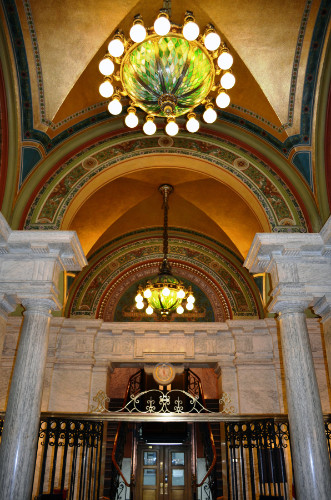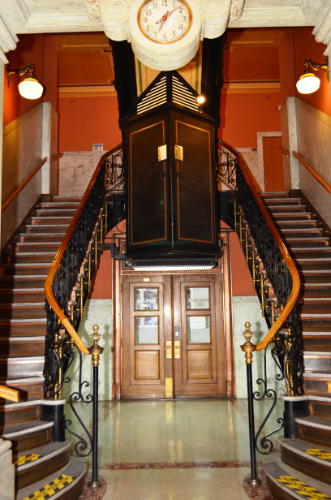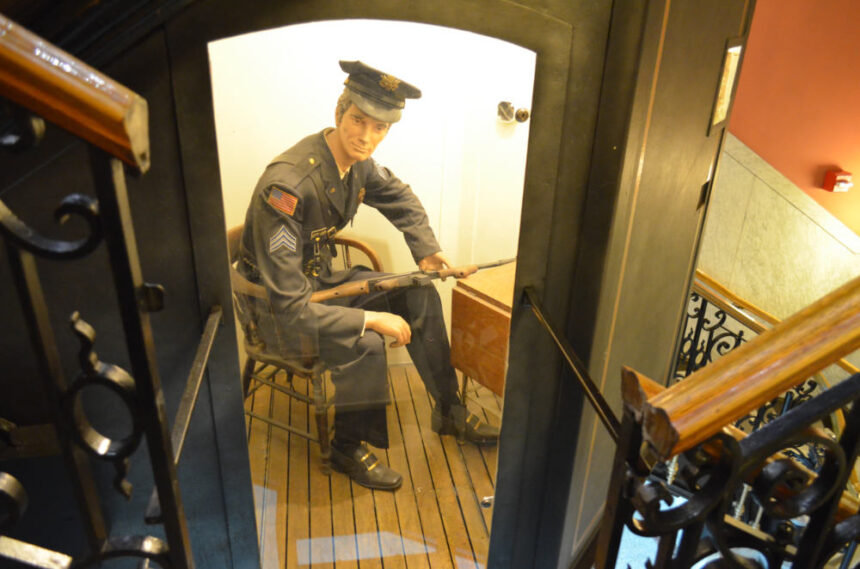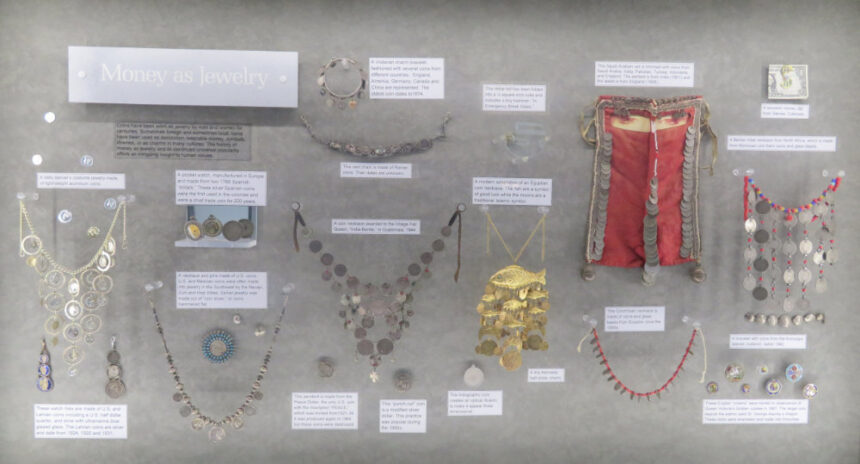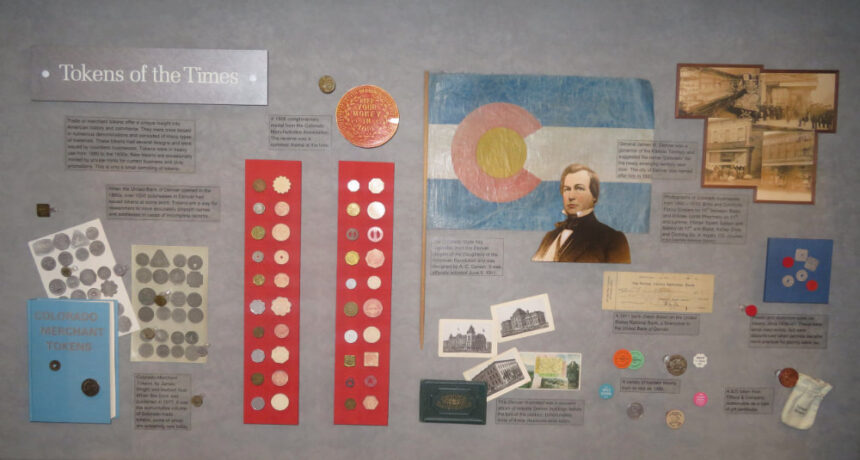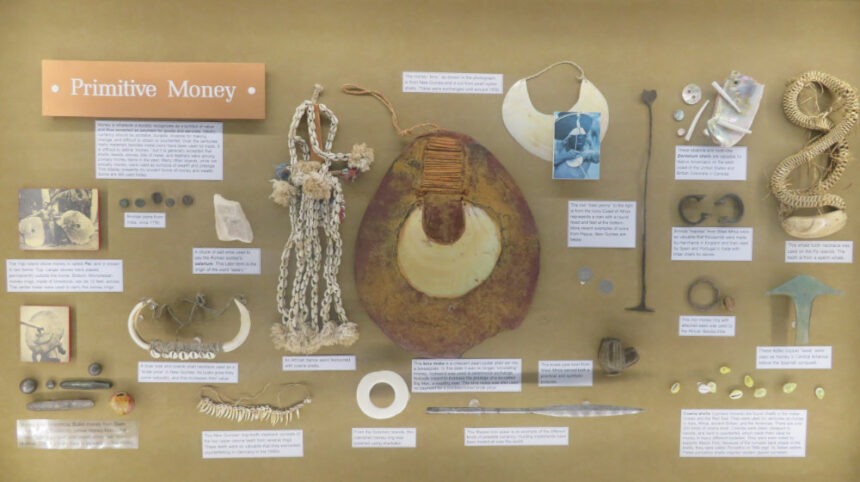US Mint: Denver Branch – A Visit
This year, the ANA World’s Fair of Money is taking place in Oklahoma City. Many people are complaining about this. OKC – as time-efficient Americans abbreviate the city’s name – does not really have an international airport. For example, there are no direct flights from Zurich or Frankfurt. Personally, I find this appealing. It gives me a good reason to fly via Denver. Visiting the Denver Mint has been on my wish list for ages.
How do you actually get into the Denver Mint?
To make sure the visit goes smoothly, I research online in advance how to get a ticket. It’s not that easy. There is no advance ticket sales. Every day at 7 a.m., 50 tickets are issued for the 4-5 tours. So you have to be there early. It’s a good thing I haven’t gotten over the time difference yet. I’m awake at 4:00 a.m. and 7:00 a.m. feels like the middle of the day.
What’s more, I can walk to the mint from my hotel in five minutes. Like many historic mints, the Denver Mint is located in the city centre near the other government buildings.
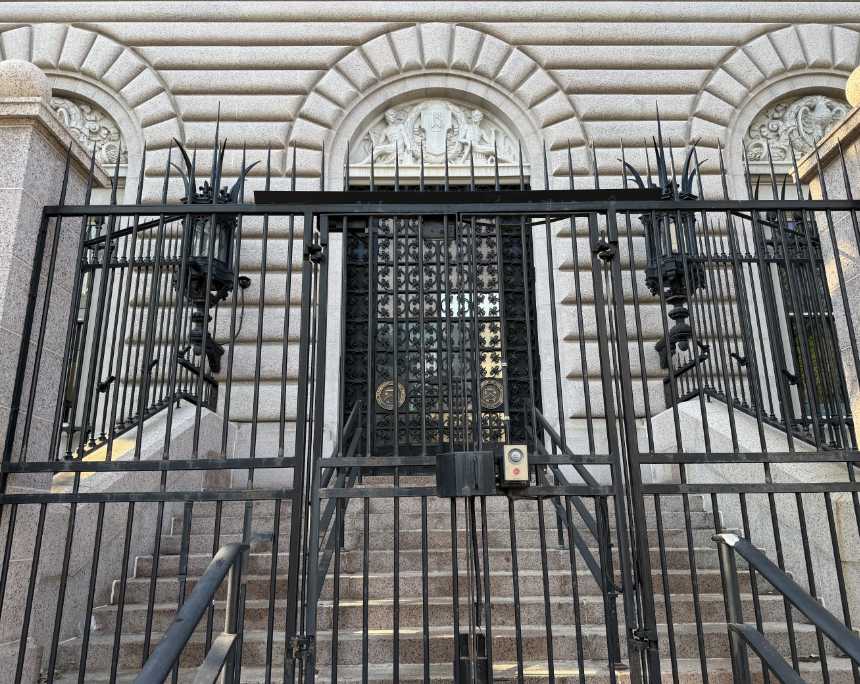
But that presents me with another problem. It is strictly forbidden to take a bag into the mint. Only a palm-sized purse is allowed. I don’t have one. So I look for a safe in my room for my passport and wallet. Unfortunately, my room doesn’t have one. Fill my trouser and jacket pockets? Forget it! Women’s clothing only has room for a handkerchief and a few credit cards. The reception desk solves my problem: my passport and wallet are stuffed into a laundry bag, sealed with tape and deposited in the hotel safe. Now I’m ready for my visit to the Denver Mint.
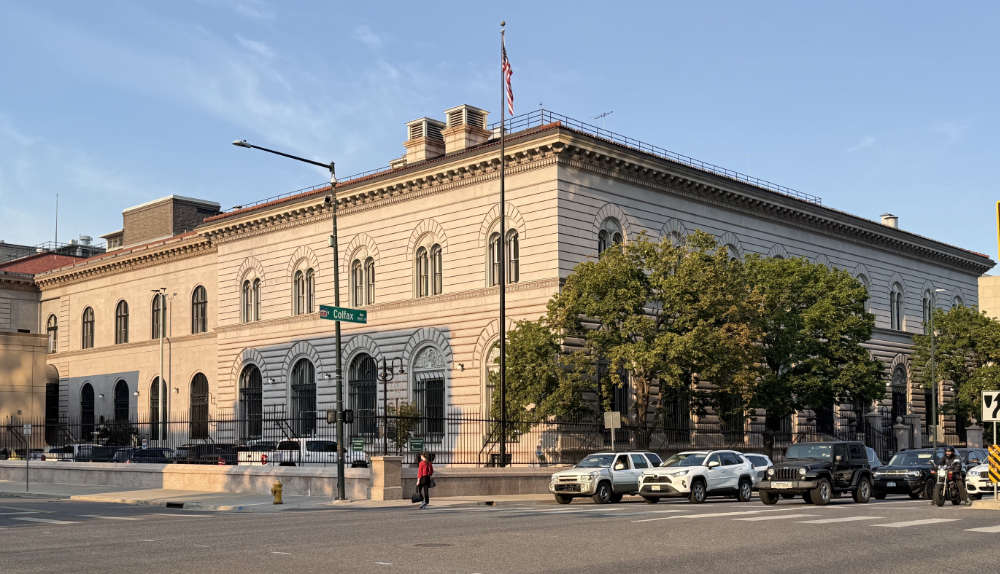
The hunt for tickets
Shortly after half past six, I stand in front of the window where the tickets are being distributed. It’s not hard to find. Just look for the queue. Because shortly after half past six, I’m by no means the first in line. About 25 people are already waiting. Will each of them get their allotted five tickets? But even if they do, I reckon there should still be enough. After all, there are four tours for 50 participants, so around 200 tickets. Finally, the bell from the neighbouring government building rings seven times. The counter opens, and I even get to choose my favourite time. The tickets are free, and no ID is required.
Later, I learn that today is an exceptionally quiet day. During the peak tourist season, turning up at half past six is nowhere near enough. I seem to have been lucky. No wonder so many people waiting are sitting on camping chairs.
The security check
My tour starts at 9 a.m., but we all have to be there by 8.30 a.m. The security check for 50 people takes time. The age range of our group is from 7 – the minimum age – to well over 70, with an average age of around 30. The many boys between 12 and 16 lower the average age considerably.
A security officer appears, like something out of a Hollywood film. He explains to us once again what we are not allowed to bring into the mint. I actually know this, so I understand his rapid-fire explanation to a certain extent. But one point remains unclear to me. I ask him about it. He answers. I don’t understand, so I ask again. Finally, I get it: I’m not allowed to bring marijuana into the mint. I wasn’t planning to, but they explain to me that it could happen, as possession and consumption are legal in Colorado. Just not in the mint. Fine, I can live with that.
So I go through the security gate, like the ones you see at airports, and enter a waiting room. Even here, photography is strictly prohibited. We’re not even allowed to look at our mobile phones, to prevent anyone from taking a selfie illegally.
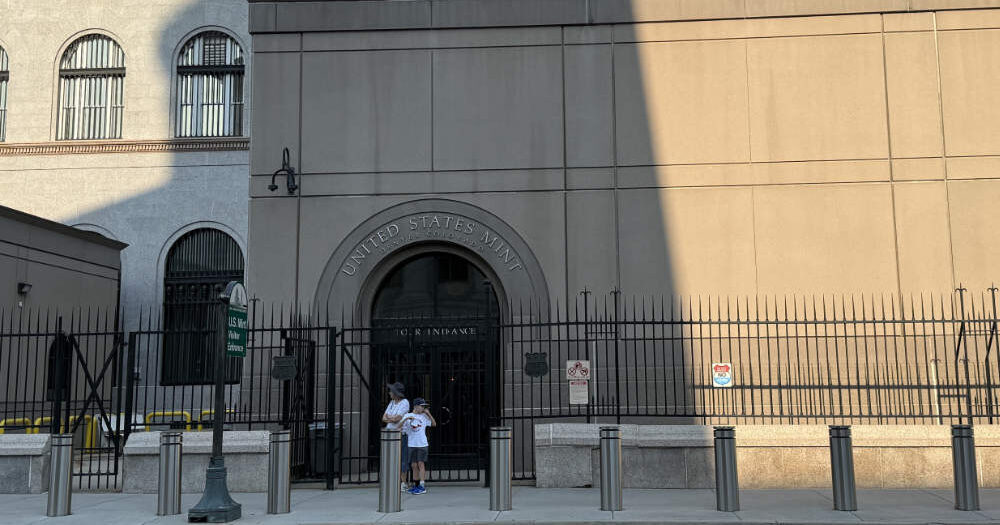
Two floors full of numismatic exhibits
The waiting room is a kind of stairwell with lots of benches. More than a dozen display cases are built into the walls. They cover all kinds of topics related to numismatics. The exhibition is getting on in years and doesn’t have the most valuable material, but it helps pass the half hour or so of waiting time. In one corner, I even discover a stand with brochures about the mint. They are available in eight – EIGHT(!) – languages, including very passable German. Unfortunately, this will be the only printed material I find about the Denver Mint. The souvenir shop does sell literature, but only about coins, not about the mint.
The American 1 cent coin
Finally, we’ve made it. The tour begins. Francis, our tour guide, introduces himself. And then he immediately brings up the question that seems to interest all Americans: What does the future hold for the 1 cent coin? Even the German media has reported on this. President Trump is said to have issued an order. Here we learn that this order does not mandate the abolition of the penny, but suspends its minting indefinitely. What happens after that? Completely unclear.
This is a problem for the Denver Mint. Because this is where the circulation coins are produced. And the penny accounts for the largest part of the minting volume.
Well, at first glance, the decision seems rational and long overdue. The production of a penny costs between 3.69 and 3.7 pence, thus reducing the seigniorage that the Denver Mint delivers to the treasury each year. According to older estimates, a penny is supposed to be in circulation for about 25 years, during which time it changes hands between 200 and 400 times. Wait a minute, that’s an enormous number of times. In Germany, this figure is much lower for the 1-cent coin. Although there are no official figures from the Bundesbank, informed circles say that German cents disappear from circulation after only a few transactions.
There is a good reason for this. In Germany, there is no good system for returning coins to the money cycle. In America, it’s different. Admittedly, the penny is so worthless here that no one keeps it in their wallet. But there is a beggar on every corner, holding a plastic cup and asking for change. Many people get rid of their small coins this way; for the beggar, it adds up. In addition, there are donation boxes for local projects and cups for tips everywhere. You are probably familiar with the large boxes at airports.
This is how a large proportion of cents quickly return to circulation in the USA. Francis is reluctant to give his opinion. He only mentions that, despite these losses, the Denver Mint pays large sums from the minting fee to the treasury. He mentions that the nickel (= 5 cents) incurs even higher losses. Its production costs between 11 and 12 cents.
But unlike the cent, the nickel is (still) accepted by most vending machines and parking meters.
It is a subordinate clause from which I gather that the 1-cent coin accounts for a large part of the Denver Mint’s annual production. And it takes a question to learn that there have been no layoffs so far. The approximately 50 employees left by mutual agreement.
Visiting a mint that doesn’t mint coins
We enter the mint, or rather the corridor on the first floor designed for tours, from which you can look down onto the minting rooms. Instead of deafening noise, there is a deathly silence. All the machines are at a standstill. A few employees scurry around to ensure that the machinery is properly mothballed.
Oh yes, American currency is also produced on German coin presses, for the most part by the Göppingen-based manufacturer Schuler. When I point this out to the security guard accompanying us during a pleasant conversation, he looks at me with wide eyes: ‘I didn’t know that,’ he says. How could he? Francis, at any rate, does not mention that the entire American coinage system uses German high-performance technology.
If you feel like visiting the American Mint, you can find all the details here. You can also take a virtual tour on the website. Incidentally, you will see more there than you would on a real visit. The video also shows the production of blanks and the packaging of the finished coins.
Incidentally, you can visit the Denver Mint souvenir shop during opening hours without a tour ticket.
And, of course, there is an addendum: from next season onwards, queuing for tickets will no longer be necessary. All tours can then be conveniently booked online.
The US Mint press office has kindly provided us with some images that we can show here:
